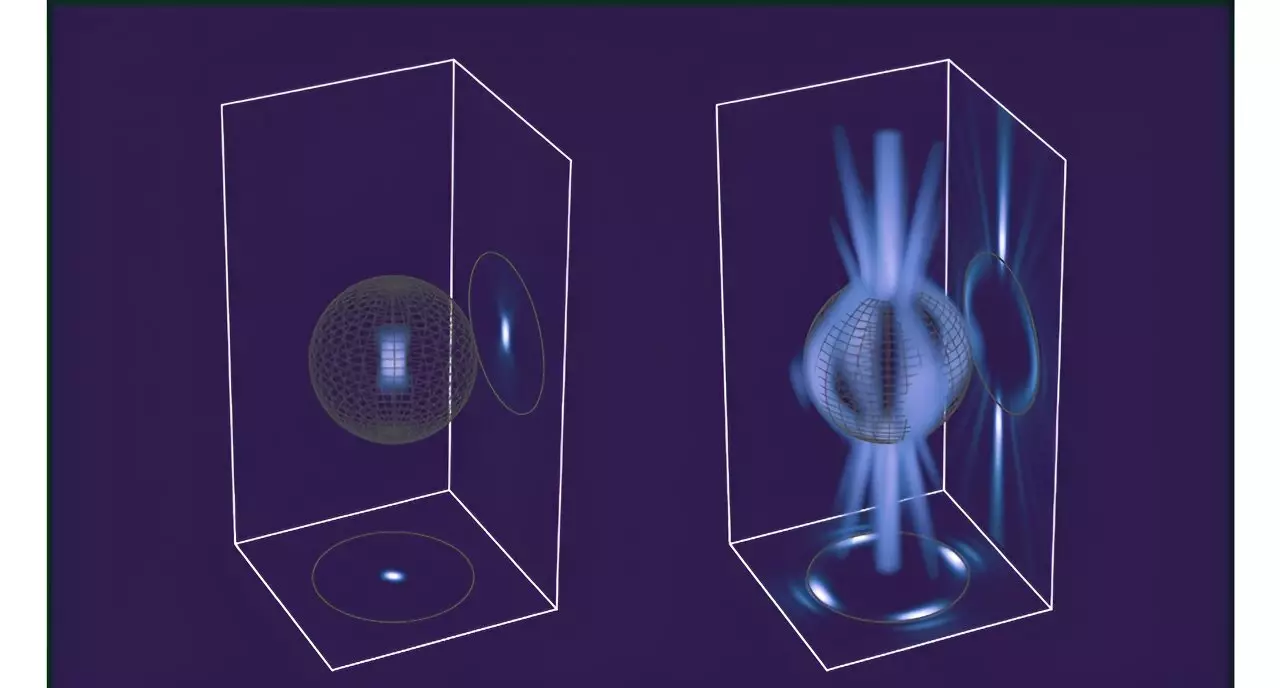Traditional optical tweezers, developed decades ago, have long been a cornerstone of microscopic manipulation, allowing scientists to hold and move tiny particles with laser beams. While groundbreaking at their inception, these devices have intrinsic limitations—particularly when dealing with larger particles. The interaction of light with matter is inherently dependent on the shape and focus of the beam, which constrains their efficiency. Now, a pioneering team led by Dr. David Phillips at the University of Exeter pushes these boundaries, employing an innovative approach that could redefine how we manipulate matter at micro and nanoscale levels.
This new methodology pivots on the concept of wavefront shaping—manipulating the phase and intensity of light in real-time to optimize how the laser interacts with a target particle. Unlike conventional optical tweezers that focus all energy on a tiny point at the particle’s center, this advanced system envelops the particle with a tailored light pattern, resulting in a “tight hug” that holds the particle more securely. Such a technique promises significant improvements in confinement, especially for larger particles, which have traditionally been a challenge due to surface interactions and less effective trapping.
From Theoretical Insight to Practical Innovation
Transforming this concept into viable technology demanded a multidisciplinary effort — blending cutting-edge mathematics, numerical simulation, and experimental finesse. The key insight was recognizing that the shape and distribution of the light’s wavefront could be customized to match the unique profile of each particle. This personalized approach is akin to tailoring a suit specifically for an individual, ensuring maximum fit and function. Through complex algorithms and iterative testing, the team developed a process where the laser’s wavefront can be precisely adjusted to optimize confinement.
The collaborative nature of this research, involving leading institutions such as the University of Glasgow and the Vienna University of Technology, exemplifies how teamwork drives scientific innovation. The result is a flexible, dynamic optical trapping system that adapts to the specific characteristics of each particle—a significant leap from the one-size-fits-all paradigm of early optical tweezers. The implications extend beyond laboratory experiments; this technology offers profound potential in fields like biomedical research, nanofabrication, and environmental sensing.
Implications and Future Horizons
What stands out about this development is its empowering potential: by harnessing the full versatility of light, scientists can now engage with particles previously difficult to manipulate. For instance, larger biological cells, complex nanostructures, or even hazardous particles could be trapped more effectively, opening avenues for research and applications once deemed impractical. Moreover, this approach challenges us to rethink the fundamental limits of optical manipulation—making us question whether current “boundaries” are simply constraints of our tools, waiting to be overcome by smarter, more adaptable solutions.
While still in the experimental phase, wavefront shaping as demonstrated by Dr. Phillips and colleagues hints at a future where optical trapping becomes more precise, efficient, and customizable than ever before. The notion of a universal optical tweezer may be outdated—what we need is a customizable, intelligent system capable of tailoring itself to the task at hand. If successfully integrated into commercial devices, this could democratize access to microscopic manipulation, transforming research across many scientific domains. Ultimately, this advancement underscores a fundamental truth: innovation often emerges from reimagining what is possible with familiar tools, leading us into a new era of light-powered manipulation.


Leave a Reply